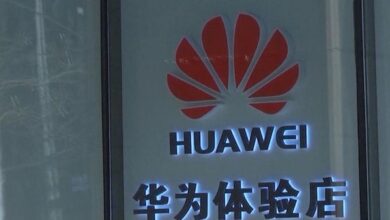SpaceX destroys boosters in dramatic abort test

SpaceX, the private aerospace company founded by Elon Musk, achieved a major milestone in space exploration with the successful completion of a dramatic abort test. The test, which took place at the Kennedy Space Center in Florida, involved an unmanned rocket lifting off to test whether a new crew capsule could survive an explosion.
The mission was a crucial step in SpaceX’s efforts to develop a new generation of spacecraft capable of carrying astronauts to the International Space Station and beyond. The test was designed to simulate a scenario in which the rocket encounters a critical failure during launch, prompting the crew capsule to jettison away to safety.
The test was a success, with the crew capsule separating from the rocket and landing safely in the Atlantic Ocean. The dramatic footage of the test captured the attention of viewers around the world, showcasing SpaceX’s innovative technology and commitment to safety in space travel.
Meg Oliver, a reporter for CBS News, provided detailed coverage of the test, highlighting the significance of the milestone for SpaceX and the future of space exploration. The successful completion of the abort test paves the way for SpaceX to move forward with crewed missions to the International Space Station and other destinations in the solar system.
The test also showcased the capabilities of the Kennedy Space Center in Florida, a historic launch site that has been instrumental in the development of the space program. With its state-of-the-art facilities and experienced workforce, the Kennedy Space Center continues to play a key role in shaping the future of space exploration.
Overall, the dramatic abort test conducted by SpaceX represents a major achievement in the field of aerospace technology. As SpaceX continues to push the boundaries of space exploration, the possibilities for human exploration of the cosmos are becoming increasingly within reach.
The test was a success as the crew capsule was able to safely detach from the rocket and deploy its parachutes, despite the rocket exploding in a dramatic fashion. This test was a crucial step in ensuring the safety of future manned missions to space.
The test, known as an abort test, is designed to simulate a scenario where the crew capsule needs to quickly separate from the rocket in the event of an emergency. In this case, the rocket’s engines were intentionally shut down mid-flight, causing the rocket to explode and the crew capsule to safely detach.
SpaceX, the private aerospace company founded by Elon Musk, has been working towards sending humans to space for years. This successful test brings them one step closer to achieving that goal.
Meg Oliver reports on the dramatic test and the significance of this milestone for SpaceX. Watch the video above for more details on this historic moment in space exploration. The digital world is constantly evolving, and with it, the need for cybersecurity is becoming more important than ever. As technology advances, so do the tactics of cybercriminals who are always looking for ways to exploit vulnerabilities in our digital systems. This is why cybersecurity professionals are in high demand, as they play a crucial role in protecting our personal and sensitive information from falling into the wrong hands.
Cybersecurity professionals are responsible for safeguarding our digital assets, whether it be financial information, personal data, or intellectual property. They work tirelessly to prevent cyber attacks, detect any potential threats, and respond quickly to any security breaches that may occur. These professionals use a variety of tools and techniques to ensure the safety and security of our digital world.
One of the key aspects of cybersecurity is threat detection. Cybersecurity professionals must constantly monitor networks and systems for any unusual activity that could indicate a potential cyber attack. They use advanced monitoring tools and technologies to detect threats in real-time and take immediate action to mitigate the risks. This proactive approach is essential in preventing cyber attacks before they can cause any damage.
Another important aspect of cybersecurity is risk assessment. Cybersecurity professionals must assess the potential risks and vulnerabilities of a system or network and develop strategies to minimize those risks. This involves identifying potential threats, analyzing their impact, and implementing security measures to protect against them. By conducting regular risk assessments, cybersecurity professionals can stay ahead of potential threats and keep our digital systems secure.
In addition to threat detection and risk assessment, cybersecurity professionals also play a crucial role in incident response. In the event of a security breach, these professionals must act quickly to contain the breach, investigate the cause, and implement measures to prevent it from happening again. This requires a high level of skill and expertise, as well as the ability to work under pressure and make quick decisions to protect our digital assets.
Overall, cybersecurity professionals are the frontline defenders of our digital world. They play a vital role in keeping our information safe and secure, and their work is essential in preventing cyber attacks and safeguarding our digital systems. As technology continues to advance, the need for cybersecurity professionals will only continue to grow, making it a promising and rewarding career choice for those looking to make a difference in the digital world. The advancement of technology has undoubtedly revolutionized the way we live, work, and communicate. From smartphones to social media, the digital age has brought about unprecedented convenience and connectivity. However, with these technological advancements also come concerns about privacy and security.
One of the most pressing issues in today’s digital landscape is data privacy. With the increasing amount of personal information being collected and stored online, there is a growing fear that this data could be misused or exploited. From targeted advertising to data breaches, the potential threats to our privacy are numerous and varied.
In response to these concerns, governments around the world have started implementing regulations aimed at protecting individuals’ data privacy. The European Union’s General Data Protection Regulation (GDPR) is one such example, which sets strict guidelines for how companies can collect, store, and use personal data. Failure to comply with these regulations can result in hefty fines, demonstrating the seriousness with which data privacy is now being taken.
In addition to government regulations, many companies are also taking steps to enhance their data privacy measures. This includes implementing encryption protocols, conducting regular security audits, and providing users with more control over their own data. For example, many social media platforms now allow users to customize their privacy settings, giving them the ability to choose who can see their posts and information.
Despite these efforts, data privacy remains a complex and ever-evolving issue. As technology continues to advance, new challenges and threats to privacy will undoubtedly emerge. It is essential for individuals to remain vigilant and informed about their data privacy rights and to take proactive steps to protect their personal information online.
In conclusion, while the digital age has brought about many benefits and opportunities, it has also raised important questions about data privacy. It is crucial for individuals, companies, and governments to work together to find effective solutions that balance the need for innovation with the protection of personal information. Only by doing so can we ensure a safe and secure digital future for all. The world of technology is constantly evolving, with new innovations and advancements being made every day. From the latest smartphones to cutting-edge artificial intelligence, there is no shortage of groundbreaking developments in the tech industry. One area that has seen significant growth in recent years is virtual reality (VR) technology.
Virtual reality is a computer-generated simulation of an environment that can be interacted with in a seemingly real or physical way. This technology has the potential to revolutionize the way we experience and interact with the world around us. By wearing a VR headset, users are transported to a completely immersive digital world where they can explore, play games, and even socialize with others.
One of the most exciting developments in VR technology is the introduction of hand tracking. Hand tracking allows users to interact with virtual environments using only their hands, eliminating the need for controllers or other input devices. This technology uses cameras and sensors to track the movement of the user’s hands and translate that into actions within the virtual world. This creates a more natural and intuitive way to interact with VR content, making the experience even more immersive and engaging.
Hand tracking in VR has a wide range of applications, from gaming and entertainment to education and training. In the gaming world, hand tracking allows players to reach out and grab objects, gesture to other players, and manipulate the environment in ways that were previously impossible. This opens up a whole new world of possibilities for game developers, who can create more realistic and interactive experiences for players.
In the education and training sectors, hand tracking in VR can be used to simulate real-world scenarios and provide hands-on learning experiences. For example, medical students can practice surgical procedures in a virtual operating room, or engineers can test out new designs in a virtual environment. This technology has the potential to revolutionize the way we learn and train for various professions, offering a safe and cost-effective way to practice skills and gain experience.
Overall, hand tracking in VR is a game-changer for the technology industry. It opens up new possibilities for immersive experiences and creates a more natural and intuitive way to interact with virtual environments. As this technology continues to evolve and improve, we can expect to see even more exciting developments in the world of virtual reality. Whether it’s for gaming, education, or professional training, hand tracking in VR is sure to have a lasting impact on how we experience and interact with the digital world.





